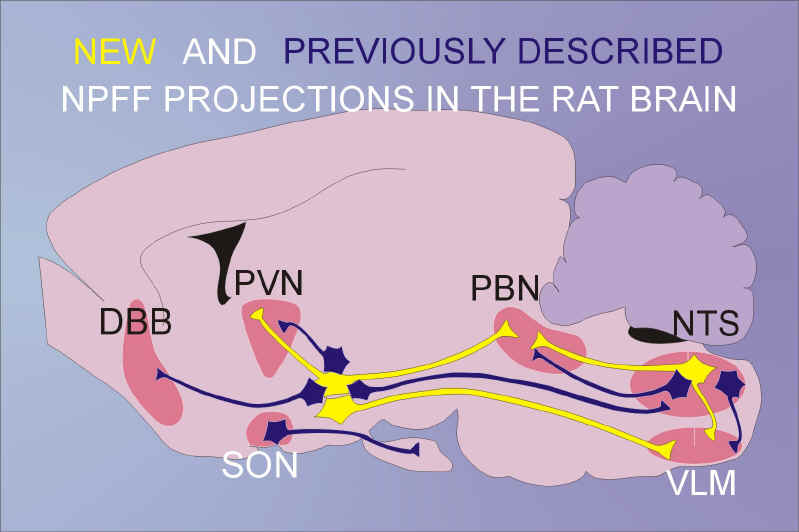
An understanding of the mechanisms that regulate arterial blood pressure under physiological conditions and in the context pathophysiological situations such as hypertension represents a major challenge. Essential hypertension is the most common form of hypertension in humans, although its cause is poorly understood. However, there is substantial evidence to indicate that essential hypertension may be related to elevated levels of sympathetic nervous activity, which originate within the central nervous system (CNS). Within the CNS, neural networks governing arterial blood pressure are contained within topographically segregated but interactive cell groups represented at all levels of the neuraxis. Amongst the many neurotransmitters and neuropeptides present in these autonomic regions, emerging evidence indicates that a group of RFamide peptides play an important role in CNS regulation of cardiovascular function.
Neuropeptide FF (NPFF) and prolactin-releasing peptide (PrRP) are two members of the RFamide peptide family that are present in the CNS and in the periphery of several mammalian species including humans. Although initial interest in NPFF and PrRP stemmed from their ability to modulate the effects of morphine and the release of prolactin respectively, emerging studies show that both peptides play an even more important role in the central processing of visceral autonomic signals, generation of central cardiovascular responses and neuroendocrine regulation.
Currently in this laboratory, we are using a combination or cellular and systems approaches to:
1. study, at the cellular level, the interactions of NPFF and PrRP with their respective receptors in modulating synaptic transmission within the endocrine hypothalamus.
2. investigate the neural circuitry underlying the observed arterial blood pressure changes evoked by central administrations of NPFF and PrRP.
3. identify the distribution and alterations of NPFF and PrRP receptors in the human brain.
Studies on the distribution of NPFF and PrRP receptors in the human brain will serve to highlight important differences and similarities with other species such as the rat where a majority of the biochemical, physiological and behavioural studies with the RFamide peptides have been carried out. For example, NPFF and PrRP modulation of vasopressin and oxytocin release respectively in the rat may be highly relevant to human physiology in the context of CNS control of arterial blood pressure, body fluid balance and behaviours such as drinking and feeding. Alterations in the levels of NPFF and PrRP receptors in hypertensive patients may provide insights into the importance of these receptors in specific brain regions within the context of CNS control of cardiovascular function in humans

Home | Personnel | Publications | Lab Features | Funding | Contact | Links | U of Alberta |